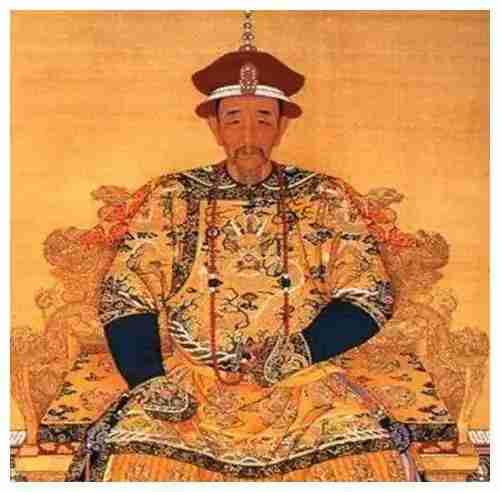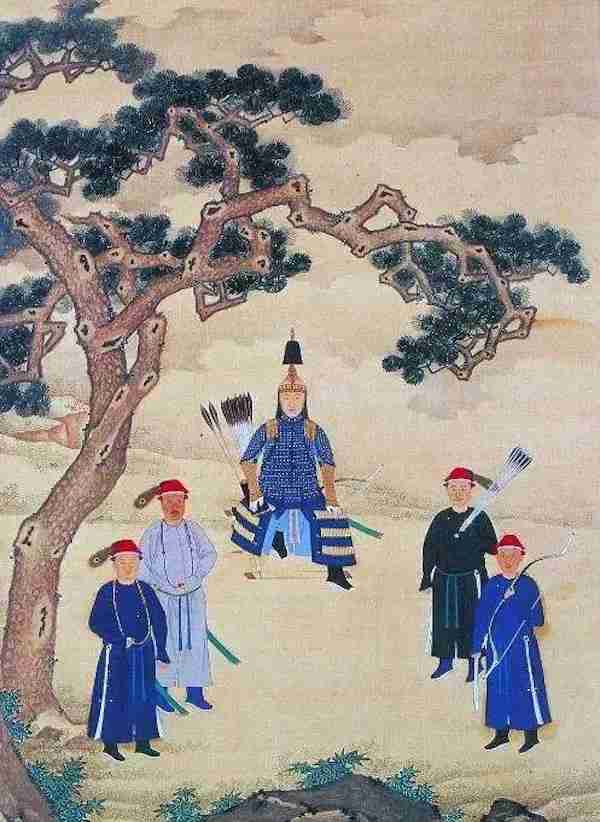Chinese history is full of intrigues, with many people rising to the upper sections of society and dynasties taking control of the country at different times. The Kangxi Emperor is considered among the greatest emperors in the history of China, and we will discuss him in this article.
Who is Kangxi Emperor?

Emperor Kangxi was the third Emperor in the Manchu-led Qing Dynasty (1644 to 1911), and he was also the second Qing Emperor to rule over unified China. His reign lasted from 1661 to 1722, with his 61-year rule marking him as the longest-reigning emperor in Chinese history, as well as landing on the list of the longest-reigning rulers in global history.
He was born on 4th May 1654 in Jingren Palace in Beijing to the Shunzhi Emperor and the Empress Xiaokangzhang. After his father died of smallpox, he was enthroned on 7th February 1661 when he was 23 years old, and his name was changed to ‘Kangxi’ the following lunar year, on 18th February 1662.
When did Emperor Kangxi rule?
His name was Xuanye, and he is considered one of the greatest Chinese emperors, thanks to various measures he took that led to the overall growing wealth and long-term stability after years of chaos and war. Due to this, the period of his rule is also known as ‘High Qing’ or ‘the Prosperous Era of Kangxi and Qianlong’, with the effects lasting even for several centuries after his death.
Before he was officially crowned emperor, his mother appointed several powerful men to act as regents: Oboi, Ebilun, Suksaha, and Sonin, although there were wars between them to gain absolute control – Oboi emerged triumphant among them and took absolute control of the throne. In 1669, the Kangxi Emperor enlisted his grandmother’s help, and eventually regain personal control of the empire.
Kangxi accomplishments
Since the Kangxi Emperor had plenty of archery skills and physical strength, he proved to be excellent at handling administrative issues. He paid close attention to all memorandums and reports that he got from all over the empire and corrected any errors he saw.
His accomplishments were numerous and spanned multiple parts of the empire. They include:
- Repairs of the Yellow River, which previous administrations had long neglected and were causing great damage to the area. In 1677, the Emperor started his efforts by appointing an official named Jin Fu as the superintendent of riparian works, and repairs on the river were completed in 1683.
- Additionally, he instituted repairs on the Grand Canal, an artificial waterway that linked the Yangtze River with Huang He in northern China – even supervising the work himself.
- Unlike most rulers, his fiscal policies did not involve raising taxes – instead, taxes were exempted or reduced several times during his rule. For instance, all provinces got tax relief beginning in 1711, with the total tax relief amounting to at least 30 million taels.
- The conquest of Taiwan was part of his goal, and he succeeded in it. After this was done, he eliminated restrictions that were part of the coastal trade and even opened four ports that became essential parts of Chinese global trade, including Canton (present-day Guangzhou).
- The Emperor also loved education, and he loved reading even in his later years when he became sick. Among his accomplishments was opening a small study hall in 1677 and using it as a place where he could engage with leading scholars. He also promoted Confucian ideals through his inclination towards Zhu Xi, a Confucian scholar.
- He promoted knowledge from Europe, so he had many Jesuit missionaries as part of his court. They taught him geometry and astronomy principles, as well as cannon technology and mathematics, and introduced atlases of the empire – with the official Chinese atlas being completed in 1717. Due to their integration with Chinese life and curing him when he contracted malaria, he thanked them by propagating Roman Catholicism in 1692, building a church for them in Beijing, and providing them with an official residence.
- Other than promoting education and debate, he instituted a rule that required the traditional civil service exams to be done every three years even during wartime. He also opened special channels in 1678, where people who showed exceptional promise in writing and learning could join his service; a decision that led to the commissioning of books on his rule, as well as a Kangxi Dictionary listing almost 42,000 characters.
- In terms of popular education, he instituted a 16-article imperial precept in 1669. This contained regulations on village life, and his son and successor continued with the traditions the precept outlined. These rules guided common life for almost 250 years.
Why was Kangxi important?

His rule was essential to strengthening the empire against external and internal threats. Some of these included his successful conquest of Taiwan, defeating the Mongols, winning against Russia in the control of the Amur River, and establishing treaties with Vietnam.
His interactions with Jesuit missionaries also impacted Chinese culture in the long term. These missionaries worked as translators, introduced him to new technology, and operated the observatory. He also influenced culture by compiling a poetical collection known as the Quan Tangshi and commissioned a new dictionary known as the Kangxi Dictionary.
Kangxi sons
All his wives and mistresses bore him 35 sons. His second son Yinreng became crown prince in 1675 when he was slightly older than a year, and the result was vicious succession fights among the other sons. Yinreng was permanently deposed in 1712, and this experience led him and his successors to refuse to appoint crown princes. Eventually, he was succeeded by his fourth son Yinzhen, who became known as the Yongzheng Emperor.
Kangxi wife
He had four empresses and many concubines. His empresses were:
- Empress Xiaogongren from the Uya clan
- Empress Xiaoyiren from the Tunggiya clan
- Empress Xiaochengren from the Heseri clan
- Empress Xiaozhaoren from the Niohuru clan
Additionally, he had 3 imperial consorts, 1 noble consort, 11 consorts, 10 imperial concubines, 5 noble ladies, and 4 mistresses.
Kangxi emperor’s cause of death
Emperor Kangxi fell ill after the 1722 Chinese New Year banquet. After getting treatment for almost the whole year, he died in December 1722 in the Changchunyuan imperial villa. He was then buried in the Jingling mausoleum located in Malanyu, northeast of Beijing.
Conclusion
Emperor Kangxi is considered one of Imperial China’s greatest rulers, and many of his decisions influenced the destiny of the country in the following centuries; making him a worthy subject of study.